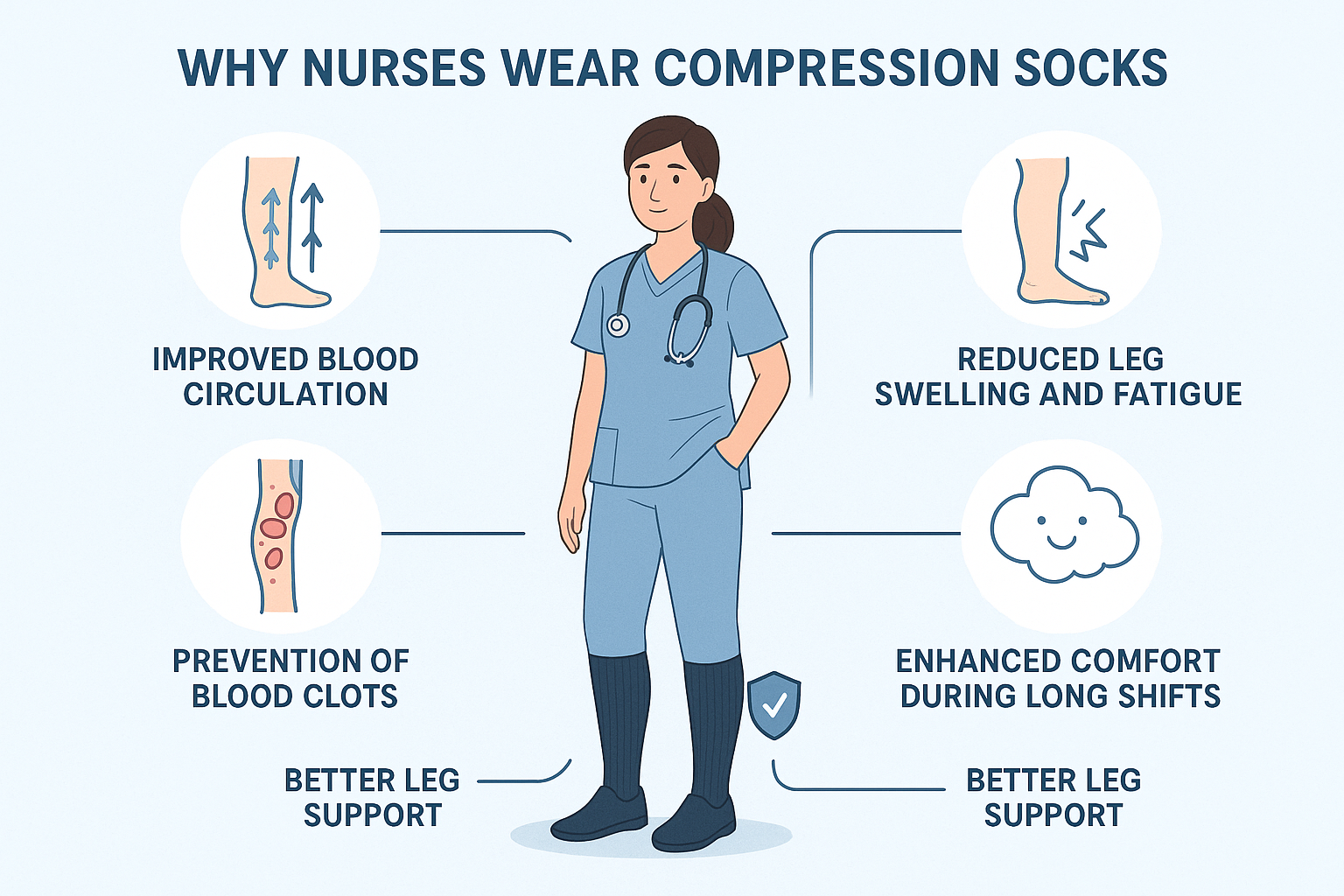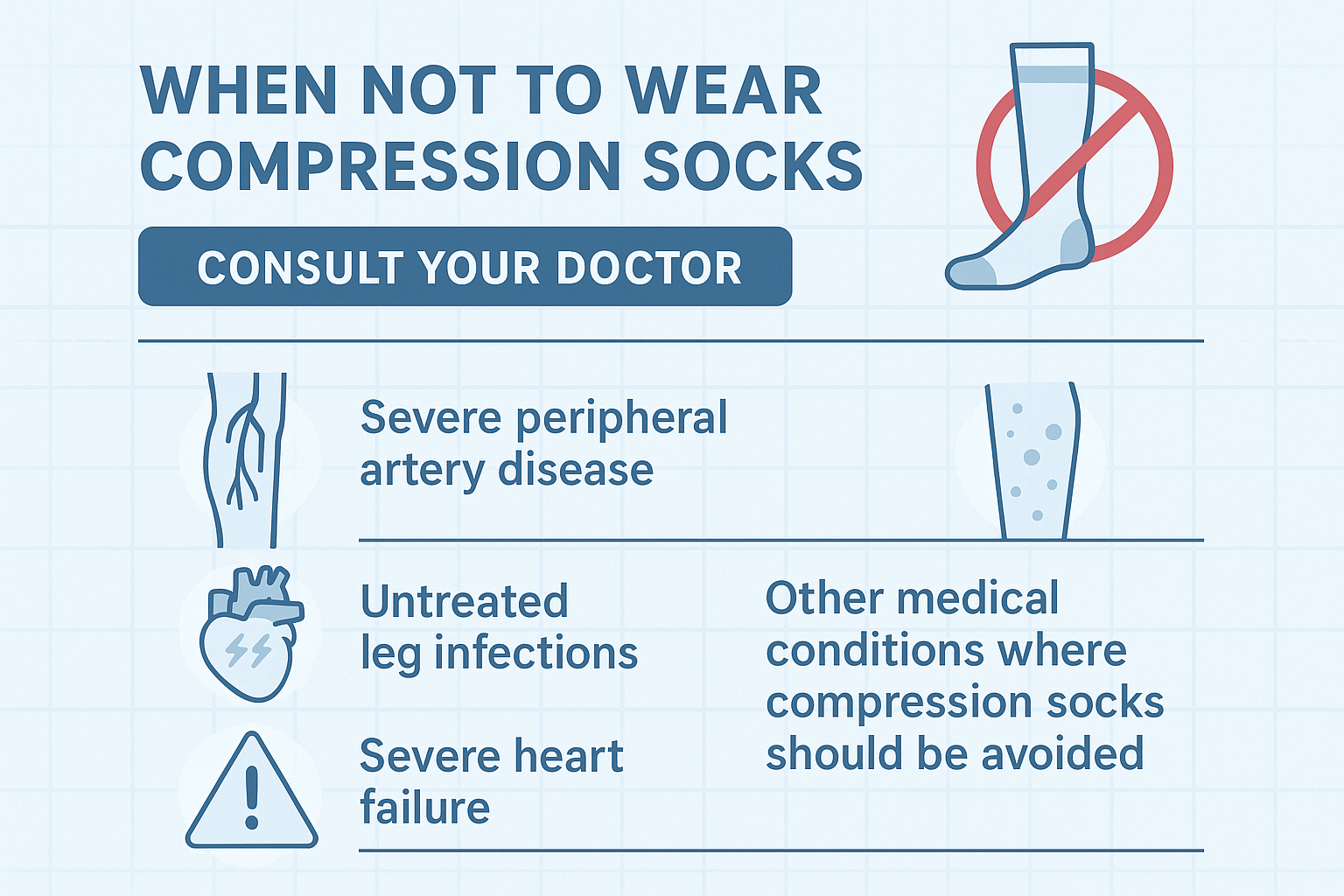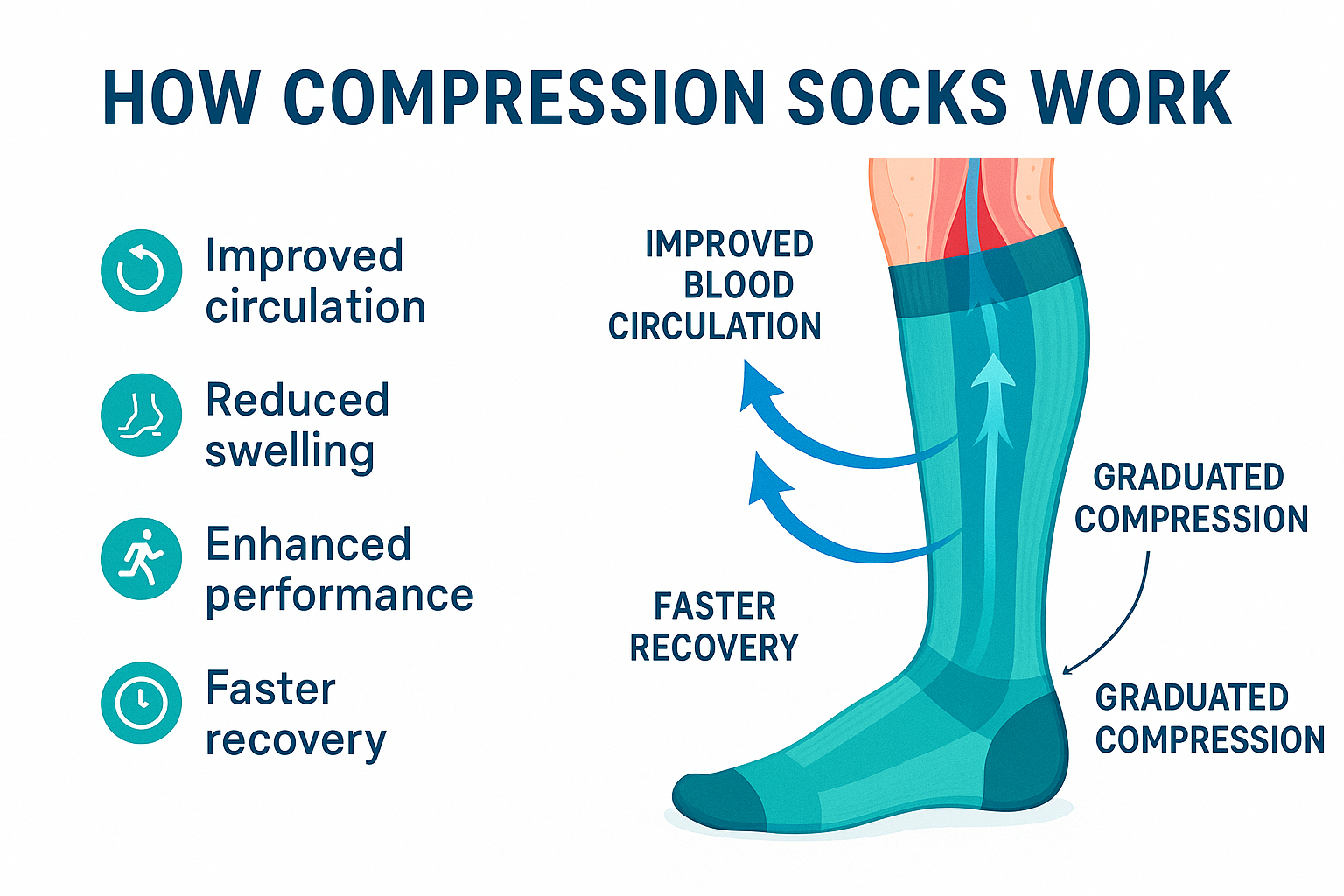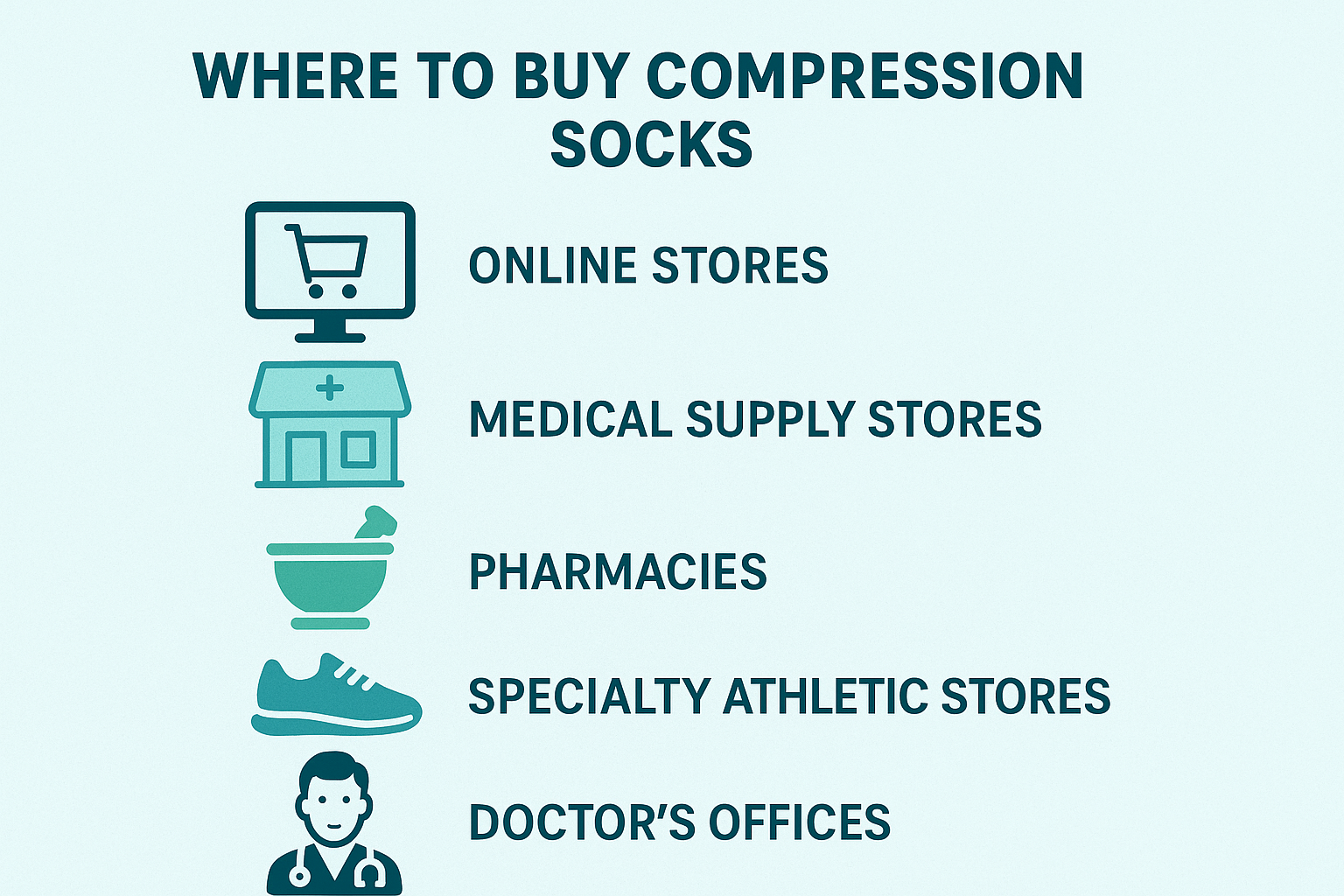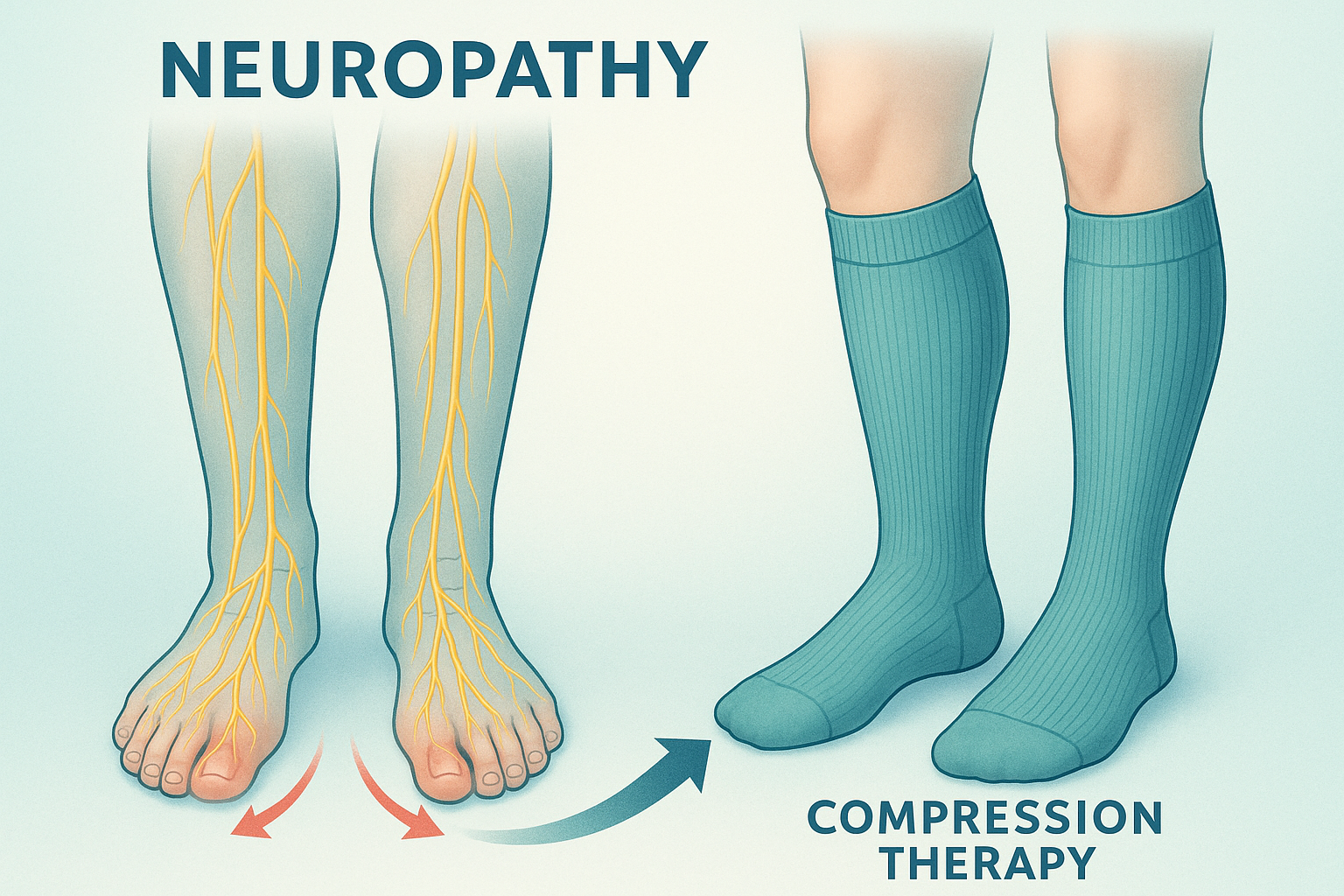
Do Compression Socks Help Neuropathy?
Neuropathy can make even simple activities uncomfortable — tingling, burning, and numbness in your feet or legs can interfere with daily life. If you’re one of the millions of people dealing with these symptoms, you may wonder: Do compression socks help neuropathy?
The answer is: they can — depending on the cause of your neuropathy and the type of compression you use. In this complete guide, we’ll explain how compression socks support circulation and nerve health, when to wear them, and what kind of socks are most effective for neuropathy relief.
What Is Neuropathy?
Neuropathy refers to nerve damage that affects how your body sends signals between your brain, spinal cord, and limbs. The most common type is peripheral neuropathy, which affects the hands, feet, and legs.
Common symptoms include:
- Tingling or “pins and needles” sensations
- Numbness in the feet or lower legs
- Burning, stabbing, or sharp pain
- Weakness or balance problems
There are many causes, including diabetes, chemotherapy, injury, and poor circulation. Because neuropathy often involves reduced blood flow to nerves, improving circulation can help manage symptoms — and that’s where compression socks come in.
How Compression Socks Work for Neuropathy
Compression socks apply gentle, graduated pressure to your legs — tighter at the ankle and looser toward the calf. This encourages blood to flow upward toward the heart, improving circulation and reducing fluid buildup in the feet and ankles.
For people with neuropathy, this improved circulation can:
- Deliver more oxygen and nutrients to damaged nerves
- Reduce swelling that contributes to pressure and pain
- Support venous return and decrease feelings of heaviness or fatigue
- Stabilize muscles and joints, improving balance and foot awareness
However, not all neuropathy sufferers should use compression socks in the same way. The right compression level and fit are essential for safety and comfort.
Benefits of Compression Socks for Neuropathy
Here’s a closer look at the potential advantages of wearing compression socks if you have neuropathy:
1. Improved Blood Circulation
One of the main causes of neuropathy-related pain is poor blood flow. By gently compressing veins and tissues, compression socks help move blood efficiently back to the heart, ensuring nerves receive a steady supply of oxygenated blood.
2. Reduced Swelling and Fluid Retention
Neuropathy can often lead to edema — swelling caused by trapped fluid in the lower legs and feet. Compression socks reduce this buildup, easing discomfort and helping prevent skin breakdown.
3. Less Pain and Nerve Sensitivity
Some users report a soothing effect when wearing compression socks. The light pressure can act as a “hug” for your legs, reducing nerve hyperactivity and calming sensations like tingling or burning.
4. Temperature Regulation
Neuropathy can make your feet feel unusually cold or hot. Compression socks, especially those made with breathable, moisture-wicking fabric like Green Drop Compression socks, can help regulate temperature and keep your feet comfortable.
5. Support During Long Periods of Sitting or Standing
People with neuropathy often experience worsening symptoms after sitting or standing for long periods. Wearing compression socks during these times can help maintain circulation and reduce flare-ups.
Who Can Benefit Most?
Compression socks are especially helpful for individuals with:
- Diabetic neuropathy: Mild compression can improve blood flow and reduce swelling without constricting circulation.
- Peripheral neuropathy from poor circulation: Compression enhances venous return and helps oxygenate tissues.
- Chemotherapy-induced neuropathy: Gentle compression can ease discomfort caused by nerve inflammation.
- Age-related neuropathy: As we age, circulation naturally slows — compression socks can help maintain leg health and reduce numbness.
Choosing the Right Compression Socks for Neuropathy
The right compression level and material are crucial when managing neuropathy. Here’s what to consider before buying:
Compression Level
- 8–15 mmHg: Mild compression — best for sensitive skin or light neuropathy symptoms.
- 15–20 mmHg: Moderate compression — ideal for improving circulation and reducing swelling.
- 20–30 mmHg: Firm compression — often prescribed for severe circulation issues or after surgery (consult your doctor before use).
Material
Choose breathable, moisture-wicking fabrics like nylon, spandex, and cotton blends. These keep your legs cool and prevent skin irritation. Avoid rough seams or tight bands that could irritate sensitive nerves.
Fit and Length
Measure your calf and ankle to ensure proper fit. For neuropathy, avoid socks that bunch or constrict. Knee-high compression socks are most common, but ankle or crew-length options can work for targeted relief.
Explore Green Drop Compression’s collection of supportive, breathable compression socks for daily comfort.
When to Wear Compression Socks for Neuropathy
For best results, wear compression socks when symptoms are most likely to occur or when you’ll be inactive for extended periods. Here are common times to wear them:
- During work hours if you sit or stand all day
- On long flights or car rides
- During or after exercise
- In the morning to reduce daily swelling
- After walking or light physical activity to support recovery
Most people benefit from wearing compression socks for 8–12 hours per day. Always remove them at night unless your healthcare provider recommends otherwise.
When Compression Socks May Not Be Appropriate
While compression socks are safe for most people, they’re not suitable for everyone. Avoid or use caution if you have:
- Severe peripheral artery disease (PAD)
- Infected wounds, ulcers, or dermatitis
- Extreme sensory loss where you can’t feel pressure
- Congestive heart failure or severe edema (unless prescribed)
If you have diabetes or circulation disorders, talk to your doctor before starting compression therapy. They can recommend the right level of compression and wearing schedule.
Additional Ways to Relieve Neuropathy Symptoms
Compression socks are just one part of managing neuropathy. Other proven strategies include:
- Regular exercise: Improves circulation and nerve function.
- Foot care: Check your feet daily for sores or color changes.
- Healthy diet: Maintain balanced blood sugar and nutrient intake.
- Massage therapy: Stimulates blood flow and relaxes muscles.
- Proper footwear: Avoid tight shoes or high heels that restrict circulation.
Combining these habits with daily compression sock use can significantly improve comfort and reduce symptoms over time.
FAQs: Compression Socks and Neuropathy
Do compression socks help with diabetic neuropathy?
Yes — light to moderate compression (8–20 mmHg) can improve circulation and reduce swelling in diabetic neuropathy. Always choose medical-grade socks designed for sensitive skin and check your feet daily for any irritation.
Can compression socks make neuropathy worse?
If they’re too tight or worn incorrectly, yes. Excessive compression can restrict blood flow instead of improving it. Make sure to measure your legs accurately and use the right level of pressure recommended by your doctor.
Should I wear compression socks at night for neuropathy?
Most people should remove compression socks before bed unless prescribed otherwise. At night, your legs are elevated naturally, reducing the need for compression.
What kind of compression socks are best for neuropathy?
Look for mild to moderate graduated compression socks made from soft, breathable fabric. Avoid thick seams, tight bands, or synthetic materials that can irritate the skin. Green Drop Compression socks are ideal for all-day comfort.
Do compression socks help numbness?
They can — by improving blood flow and reducing swelling that contributes to numbness. However, they won’t reverse nerve damage; they help manage symptoms and support circulation.
Related Guides
Final Thoughts: Compression Socks Can Help Manage Neuropathy Comfortably
While compression socks can’t cure neuropathy, they can help relieve common symptoms like swelling, numbness, and fatigue. The key is choosing the right compression level and wearing them consistently during the day.
For daily comfort and improved leg health, explore Green Drop Compression’s collection of premium compression socks. They’re engineered for comfort, circulation, and all-day support — so you can move freely and feel better from the ground up.



